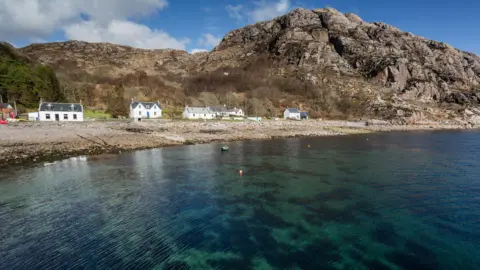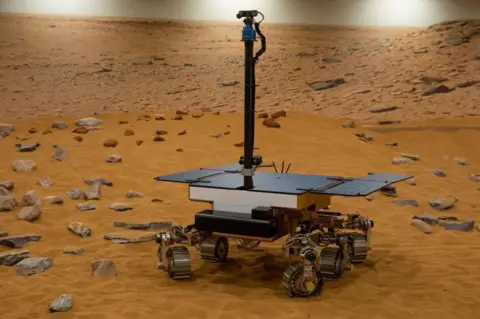Mars rover technology tested out on Highland rocks
 Getty Images
Getty ImagesTechnology which will be used in the search for evidence of life on Mars has been tested in the Scottish Highlands.
The European Space Agency (ESA) plans to send a robotic rover to the Red Planet to study its geology - and look for fossils and minerals.
A University of St Andrews team has been testing equipment in Lower Diabaig, in Torridon, where there are rocks that are billions of years old and similar to those found on Mars.
The trials have included of cameras of the type to be used as the rover's "eyes", and kit that can detect ancient biology preserved in the rock.
The ExoMars programme comprises two missions.
The first, called Trace Gas Orbiter, was launched in 2016 while the second has a target launch of 2028, and aims to land the rover on the planet.
The robot is named after London-born scientist Rosalind Franklin, who died in 1958.
ESA said the missions would tackle the question of whether life has ever existed on Mars.
Dr Claire Cousins of the University of St Andrews said mission technology needed rigorous testing on Earth to make sure it would work on the red planet.
She said the rare geology around Lower Diabaig was "ideal" as a testbed.
She told BBC Scotland's Landward programme: "The rocks haven't metamorphosed right, they haven't been cooked and squeezed and crushed under mountain belts.
"They have been beautifully preserved - a slice of time."
The rocks include billion-year-old mudstone and other rocks which are stacked one on top of the other in layers.
Dr Cousins said: "These are perfect for showing us there was once liquid water - a habitable environment for life.
"Also, these rocks are very good at capturing evidence of that ancient past biology. It's sandwiched between the rocks."
She added: "We don't know yet if there was ever life on Mars, but these are the kinds of rocks that are going to preserve it."
 Getty Images
Getty ImagesSeven years ago a Nasa Mars rover, Curiosity, explored a part of the planet named after Torridon.
Martian geological areas and features have been named by Nasa after places on Earth.
Several of the names were taken from Scotland and, as well as Torridon, there is a Siccar Point, Muck, Wick, Sandwick and Holyrood on Mars.
Nasa chose the name Torridon due to the Torridonian Supergroup, a geological formation in the north-west Highlands that contains some of the oldest evidence of life of any rocks in the UK.
In 2012, Glenelg held a celebration in honour of a location on Mars being named after the small Highland community.
